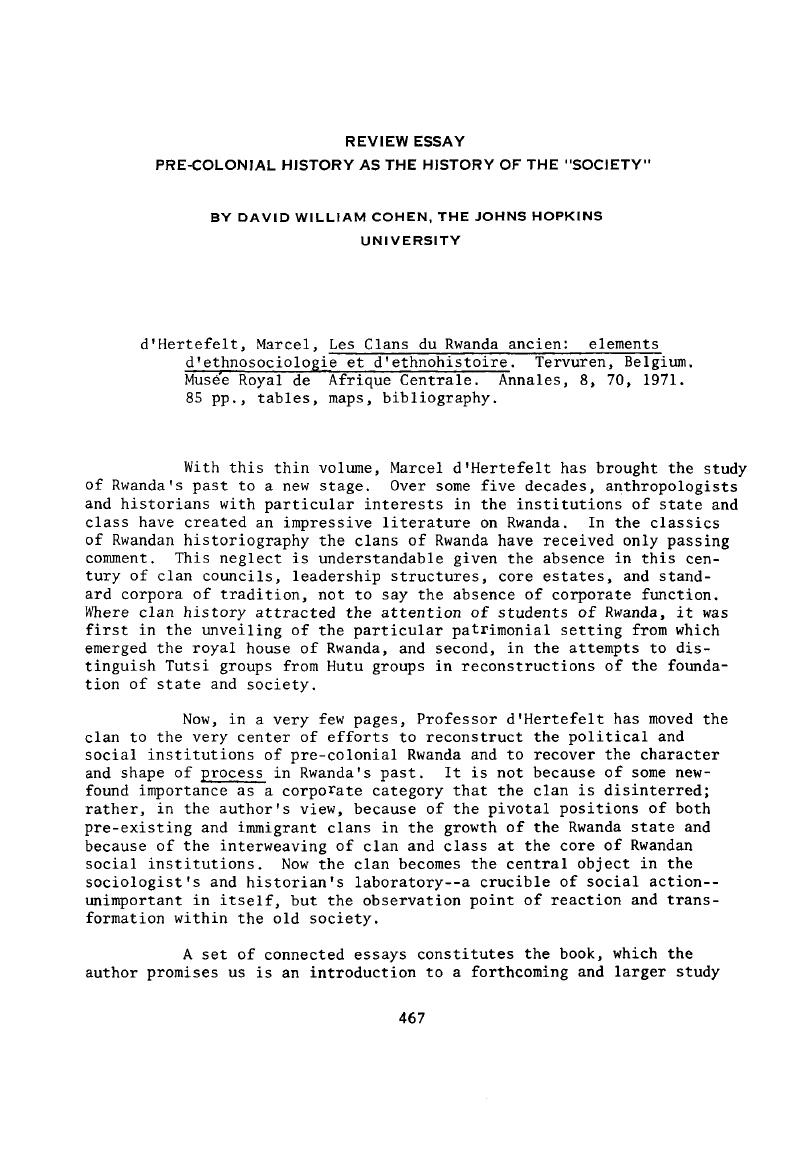No CrossRef data available.
Article contents
Pre-Colonial History as the History of the “Society”
Published online by Cambridge University Press: 23 May 2014
Abstract

- Type
- Review Essay
- Information
- Copyright
- Copyright © African Studies Association 1974
References
Notes
1 Among the practitioners of pre-colonial history working on the region whose work is in some stage approaching completion, or complete, are Adefuye on the Palwo, Atkinson on western Acholi and Bugwere, Bait-wababo on Mpororo, Betbeder on Buzinza, Buchanan on Bunyoro-Kitara, Cohen on Busoga, Denoon and Kamuhangire on Kigezi, Garry on central Acholi Hartwig on Bukerewe, Herring on Nyakwai, Holmes, Austen, Itandala and Collinson on Sukuma, Jensen on Buvuma, Kaijage on Kyamutwala, Kakwenzire on Bujumbura, Karugire on Nkore, Katoke on Karagwe and Ihangiro, Kiwanuka on Buganda, Kiyaga-Mulindwa on Sesse, Lamphear on Jie, Mugane and Tosh on Lango, Ogot on Padhola and Kenya Luo, Packard on Padhola and Bushi, Pender-Cudlip on Iramba, Redmayne on the Hehe, Roberts on Nyamwezi, Schmidt on Buhaya, Shorter on Ukimbu, Unomah on Unyanyembe, Vansina, Kagamé, and Rennie on Rwanda, Vansina on Burundi, Weatherby on Sor, Webster on eastern Acholi and Teso, Were on Buluhya and Bugisu, Wheeler on Kitagwenda, James Wilson on Toro, and J.G. Wilson on the Oropom.
2 Oliver, R., “Discernible Developments in the Interior, c. 1500-1840,” Oliver, and Mathew, G., eds. History of East Africa, vol. I (Oxford, 1963), and Oliver's several articles in Uganda Journal Google Scholar; Ogot, B.A., “Kingship and Statelessness Among the Nilotes,” Vansina, J., Mauny, R., and Thomas, L.V., eds. The Historian in Tropical Africa (London, 1964).Google Scholar
3 (London, 1954 and Boston, 1965), pp. 5-6.
4 In the writing of The Historical Tradition of Busoga: Mukama and Kintu (Oxford, 1972), which was based on field work undertaken in Busoga, Uganda during 1966 and 1967 and which considers the history of the Busoga area before the foundations of the states in the north. A second volume, based additionally on field work in 1971 and 1972, which is in preparation, considers northern Busoga between approximately 1700 and 1892.
5 Here, the recent work (as yet unpublished) by John Rowe and David Kiyaga-Mulindwa demonstrates the value of looking away from the focal institutions of kingship and court for an understanding of Buganda society in the pre-colonial period. The present writer has been working on an analysis of middle and lower level chiefs in the small kingdoms of northern Busoga during the nineteenth century and on vertical and horizontal mobility during the same period. Processes of change which were earlier missed are being unveiled. Atkinson's work on the emergence of states in western Acholi demonstrates the value of applying new analytical tools to traditional material. Freedman's work on possession cults in southwest Uganda and northern Rwanda demonstrates similar promise.
6 Already, there are examples of work which reach beyond the boundaries of single societies and which tackle the history of institutions of regional scope. Steinhart's work sustains a vigorous interest in stratification in the western parts of the Lake Victoria region. Webster's attempt at dating and locating famines over the whole area constitutes a first stage of getting at some of the underlying forces contributing to change in the region as region. Iris Berger's work on “kubandwa” is of regional cast and should be of interest to historians throughout East Africa. Ehret's work on linguistics presents a model which could be applied elsewhere in the area.


